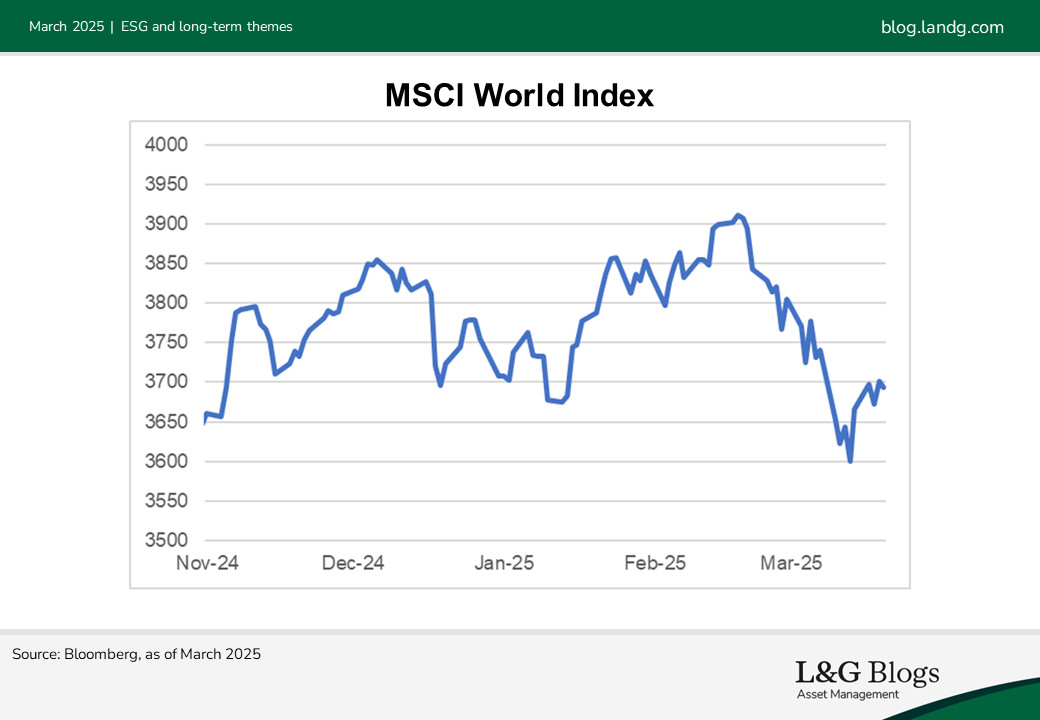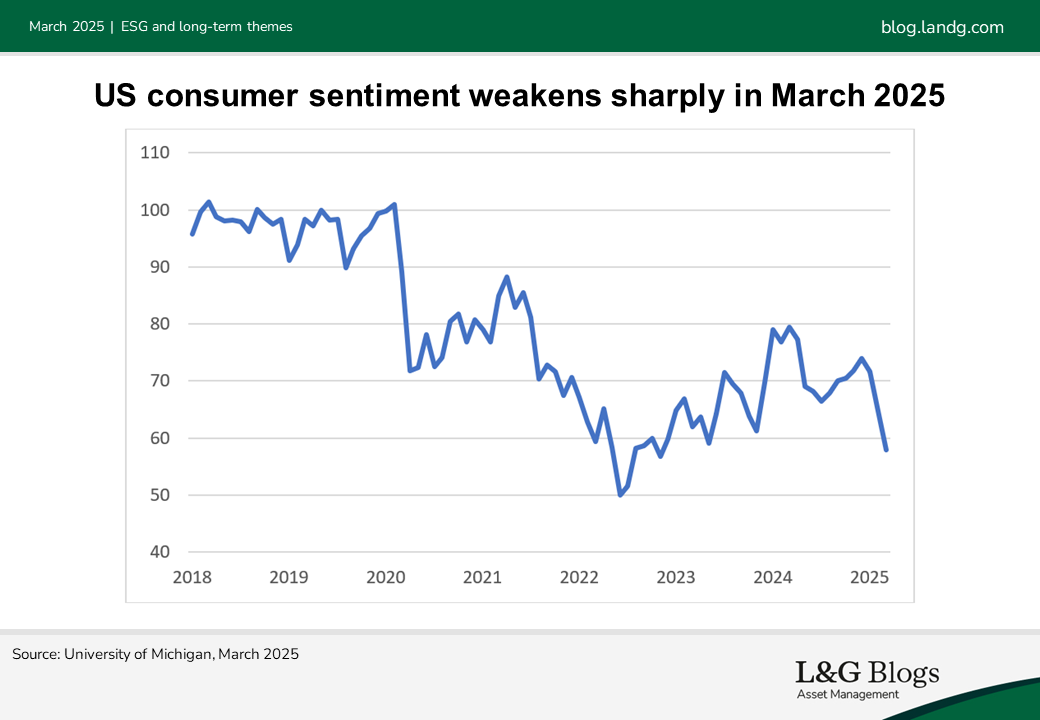Disclaimer: Views in this blog do not promote, and are not directly connected to any L&G product or service. Views are from a range of L&G investment professionals, may be specific to an author’s particular investment region or desk, and do not necessarily reflect the views of L&G. For investment professionals only.
Deglobalisation 2.0: The macro picture
Deglobalisation is a mega-trend we see impacting the investment landscape over the long term. In this, the first of a four-part series, we look at the macro impact of an increasingly diverging world on private markets.

President Trump 2.0
Last year we did a deep dive into deglobalisation, focusing on the various channels through which this megatrend can influence private markets asset allocation and performance. One observation was that deglobalisation creates a huge amount of uncertainty and that new political leadership can quickly create a different macro environment.
President Donald Trump’s re-election has reinforced that point. The Trump 2.0 administration has swiftly put its ‘America First’ agenda to work.
The US has already imposed tariffs on Canada, Mexico and China – as well as on all imports of aluminium and steel. The president has also mooted additional reciprocal tariffs on Europe, coming into force on 2 April.
These actions have caused significant upheaval in the public equity and fixed-income markets. The global equity market, for example, has given up all its post-election gains and more.

We believe there are also significant implications for private market investors.
Macro uncertainty
Upside risk around inflation and inflation expectations mean that all else equal interest rates, particularly in the US, are likely to be higher than they otherwise would. What’s also challenging from a growth perspective is the policy unpredictability which makes business planning/investment more difficult. Ultimately this is likely to weigh on growth in the US. It puts the Federal Reserve in a difficult position, and we think it would be complacent to count on the central bank looking through the inflation impact and proactively cutting rates in the US.

In Europe, on the other hand, the fiscal stimulus associated with the removal of the debt brake in Germany, despite the potential impact of tariffs, is lifting near-term growth expectations. Initial estimates of the boost to growth range widely, but at between 0.5% to 2% over the next few years the impact is expected to be material[1].
A more volatile backdrop may complicate investment decision making, creating headwinds to capital expenditure projects, M&A activity and fresh capital allocations. Higher short and long-term discount rates also put pressure on asset pricing by more aggressively discounting future cashflows. Higher inflation in the absence of economic growth also undermines the real value of cashflows.
So where to look for resilience? We believe this lower growth / higher-inflation environment favours asset types and companies with strong pricing power. In the real asset space, residential, industrial and digital infrastructure may benefit from needs-driven, secular demand growth. Clean energy investment, in our view, is increasingly cost competitive with conventional fuels, as well as having benefits to energy independence for energy importing countries.
In private credit, we see the coupons on floating-rate loans that comprise much of the sub-investment grade market likely being supported by policy rates remaining elevated for longer, though some borrowers may struggle if GDP slows materially. Investment-grade private credit has proven out through multiple cycles, where credit quality and structural protections of these assets should immunise investors from losses.*
Geographically, recent developments create a challenge for investors everywhere, though uncertainties will be felt particularly for US investments. While the US is, and will remain, the world’s preeminent ‘private market’ by weight of assets, we anticipate many investors will be looking at balancing their exposures.
Global portfolio construction
Deglobalisation, of which the policies of the US administration are a stark example, is a particular challenge for those charged with building private markets portfolios, given the typically long-lived and less liquid (relative to public markets) nature of the assets. Both domestic political and geopolitical risks have been increasing in parallel. This is driving higher event risk and the risk of enduring changes in the operating environment in different countries and regions which would have implications for asset pricing and future returns.
We think it would be very tempting to look for safe havens. As we will discuss in this series, there are specific areas that we would see as being relatively resilient. At the same time, we need to stay humble in our ability to predict the path through a more volatile environment. So, sitting above the sector tilts that create resilience, investors may wish to think about four ways to increase the robustness of portfolios:
Stress testing: Implementing rigorous stress testing to evaluate how portfolios might perform under various adverse scenarios. This helps to identify potential vulnerabilities and areas of concentration. Focusing on more extreme scenarios can act as a ‘fire drill’, preparing teams for how they may need to respond rapidly when under pressure.
Focusing on underlying asset liquidity: Private markets have a wide spectrum of underlying asset liquidity – from short-dated private credit to highly-specialised real assets with a narrow range of potential owners. Different countries, regions and even cities can also have very different liquidity profiles. We’ve found that categorising private markets portfolios in terms of their liquidity has been helpful.
Public/private synergies: The creation of hybrid portfolios – blending private market exposures with liquid proxies – has seen a resurgence of interest from investors who have a structural need for liquidity. Against the backdrop of deglobalisation, these strategies have a role for any investor seeking to create capacity to adjust allocations as their views of risk evolve.
Diversification**: Private asset portfolios historically were often characterised by ‘home’ bias – we see a temptation for investors to think ‘best the devil you know’. We think that would be a mistake. A more volatile economic and capital market environment makes it more important than ever to construct a spread of risk exposures – across geographies, asset classes and sub-sectors.
Of course, presidential terms only last four years – a shorter period than the typical lifecycle of a private markets fund. Deglobalisation, however, is a long-term trend reshaping the landscape. Private markets portfolios must adapt.
*Past performance is not a guide to the future.
**It should be noted that diversification is no guarantee against a loss in a declining market.
[1] Source: Citi, Deutsche Bank, March 2025
Recommended content for you
Learn more about our business
We are one of the world's largest asset managers, with capabilities across asset classes to meet our clients' objectives and a longstanding commitment to responsible investing.

